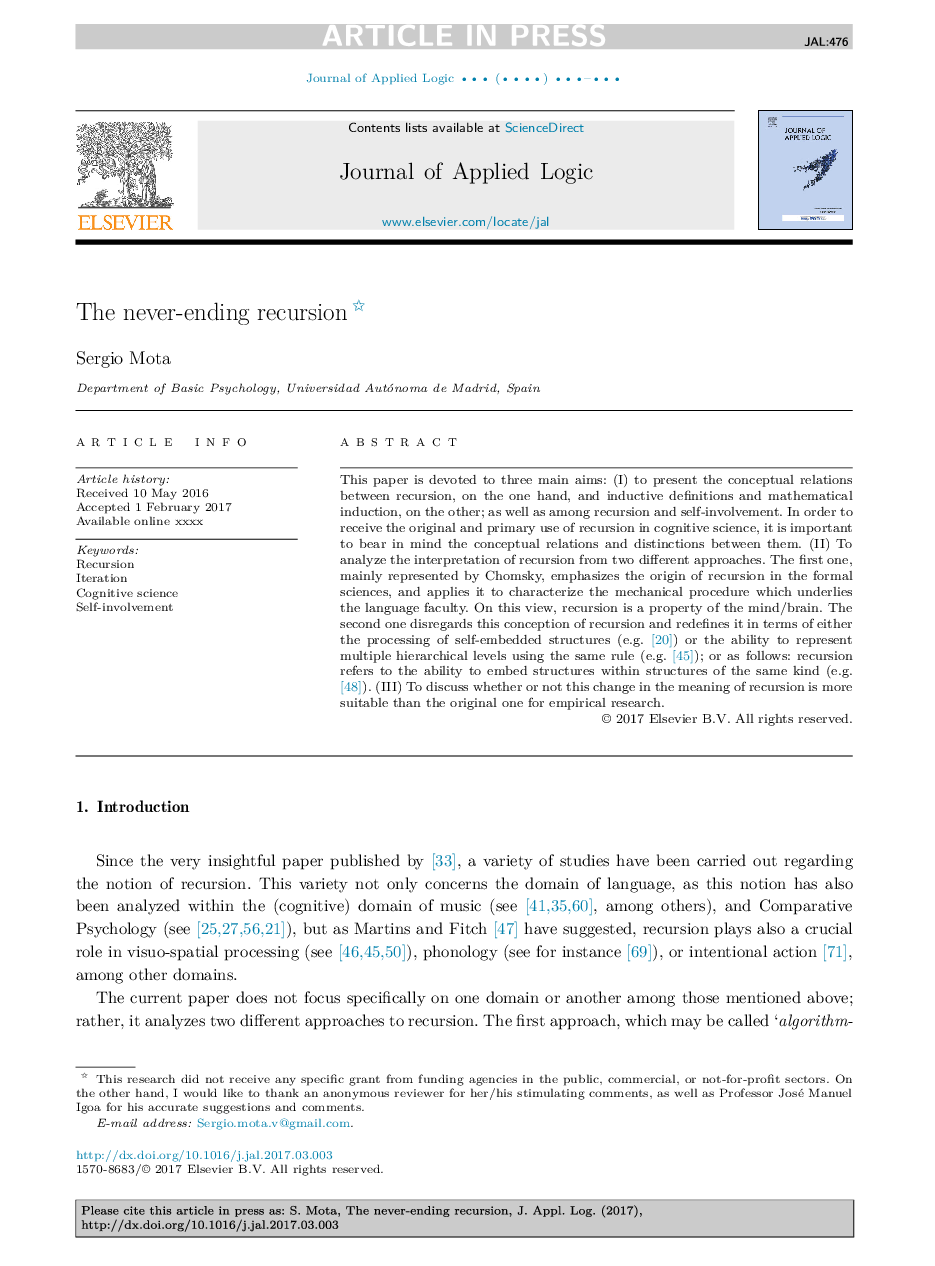| Article ID | Journal | Published Year | Pages | File Type |
|---|---|---|---|---|
| 8904329 | Journal of Applied Logic | 2017 | 20 Pages |
Abstract
This paper is devoted to three main aims: (I) to present the conceptual relations between recursion, on the one hand, and inductive definitions and mathematical induction, on the other; as well as among recursion and self-involvement. In order to receive the original and primary use of recursion in cognitive science, it is important to bear in mind the conceptual relations and distinctions between them. (II) To analyze the interpretation of recursion from two different approaches. The first one, mainly represented by Chomsky, emphasizes the origin of recursion in the formal sciences, and applies it to characterize the mechanical procedure which underlies the language faculty. On this view, recursion is a property of the mind/brain. The second one disregards this conception of recursion and redefines it in terms of either the processing of self-embedded structures (e.g. [20]) or the ability to represent multiple hierarchical levels using the same rule (e.g. [45]); or as follows: recursion refers to the ability to embed structures within structures of the same kind (e.g. [48]). (III) To discuss whether or not this change in the meaning of recursion is more suitable than the original one for empirical research.
Keywords
Related Topics
Physical Sciences and Engineering
Mathematics
Logic
Authors
Sergio Mota,
